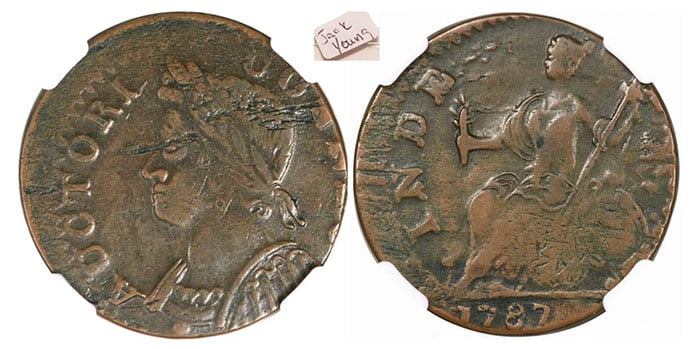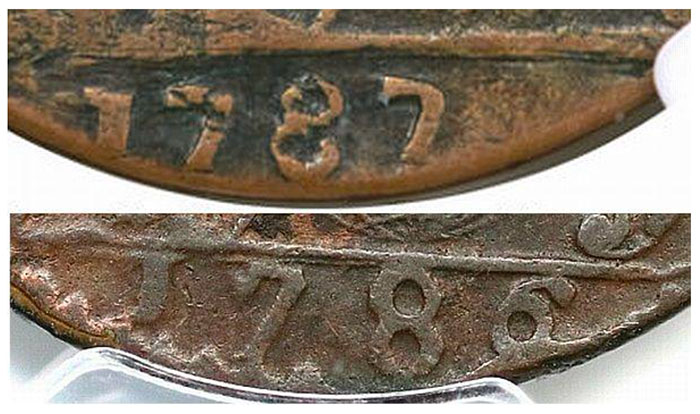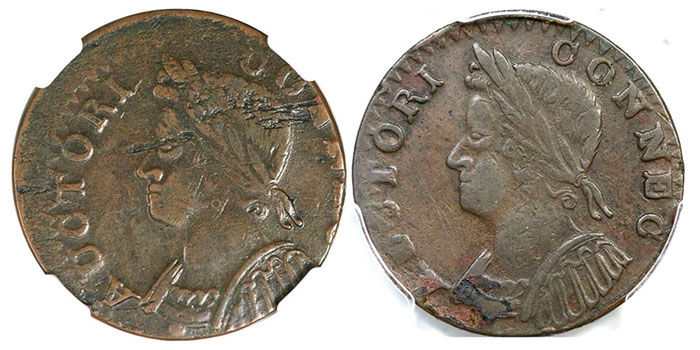By Jack D. Young, Early American Coppers (EAC) ……
In this series, I intend to continue to showcase different levels of “counterfeits”, using a rather broad definition of the term. To that end, this installment focuses on a one-off example that is actually an altered/tooled variety made to appear as another. It is deceptive enough to have been authenticated genuine by one of the grading services.
It’s not every day you enter a major coin show, visit a friend and dealer’s table only to have him tell you “I have one here with your name on it!”
And so, as always, this installment’s “Dark Corner” example:

This example had previously been sold at auction where it was identified as a 1786 M4. 4.1-G Mailed Bust Left Connecticut copper, with the date 1787!

As I started my research of this one I contacted several members from the Colonial Coin Collectors Club (“C4”) and confirmed there is no known matching 1787 variety for this one, but it does match design elements of the 1786 attributed by Heritage.
One would certainly not match it by the date, which was re-engraved/tooled to read 1787.



One of the interesting notes on this one from the Heritage auction listing is the provenance back to a Stack’s 1954 sale. I sent a note to the now recently departed (and much missed) Harvey Stack and received a response stating how cool it is to see a coin still linked back to one of his sales and suggested looking for two auction catalogs to further the history trail. So I have some more digging to do.
One can only speculate why this example was worked over; comparing it to a genuine example I would expect the “6” to have been off the planchet as a result of the off-center strike and someone gave it their best shot at the actual date. Maybe someone was trying to make a unique variety of 1787 but regardless, it is an interesting example of early copper.
As noted by Heritage, the alteration was done long enough ago that the color matches and blends in, making it less conspicuous to the eye.
A note on the term “tooling”- Per one of the TPG’s descriptions, the term refers to either the smoothing of a coin’s fields to remove scratches, corrosion, and other forms of damage or to the restoration of lost details through the use of an engraver or knife.
Going forward, future articles will include other “Dark Corner” examples exhibiting tooling and re-engraving of details, but duplicated in the dies used to strike them to produce several “clones” – as opposed to this unique 1787/1786!
And of course, the TPG was notified and the online cert now shows “CONTACT CUSTOMER SERVICE” for the grade.
Best as always,
–Jack
MORE Articles on Counterfeit Coins by Jack D. Young




